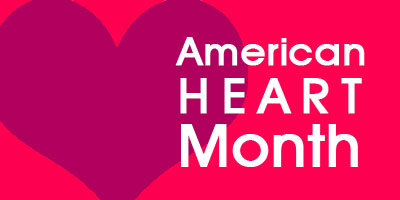Friday Feature: How to Conquer the Afternoon Slump
Don't let the afternoon slump ruin your workday! Boost your energy throughout the day and stave off that dreaded fatigue later in the afternoon.
Don't let the afternoon slump ruin your workday! Boost your energy throughout the day and stave off that dreaded fatigue later in the afternoon.
Aside from the things we can do when not at work to help us feel healthy and productive — getting enough sleep, eating right, exercising — there are some things we can do while at the office to help us feel healthier and more productive while on the job.
Fight the detrimental effects of sitting all day at work with some office-friendly exercises and stretches. Get those legs ready for some good ol' fashioned squats!

Alright, so there might be only a few days left of March, but it’s not too late to get the most out of National Nutrition Month®! When it comes to your overall health and well being, it’s never too late to start adopting better eating habits and a solid exercise routine – both for yourself and your loved ones.
National Nutrition Month® is a nutrition education and information campaign sponsored annually by the Academy of Nutrition and Dietetics (formerly the American Dietetic Association). It began in March 1973 as “National Nutrition Week” but became a month long observance by 1980 due to growing public interest in nutrition.
With more than 70,000 members, the Academy is the world’s largest organization of food and nutrition professionals. Its mission is to promote optimal nutrition and well being for all people by advocating for its members. The majority of the Academy’s members are registered dietitian nutritionists and dietetic technicians.
National Nutrition Month focuses attention on the importance of making smart food choices and developing solid eating and exercise habits. This year’s theme, “Bite into a Healthy Lifestyle,” encourages everyone to adopt eating and physical activity plans that are focused on consuming fewer calories, making informed food choices and getting daily exercise in order to achieve and maintain a healthy weight, reduce the risk of chronic disease and promote overall health.
The Academy provides a number of resources for people looking to get on or stay on the path toward good health. For example, the Good Nutrition Reading List includes publications from both the Academy and otherwise collected into the following categories:
Another resource is MyPlate, a tool of the United States Department of Agriculture (USDA). According to the MyPlate website, the MyPlate symbol is an “easy-to-understand visual cue to help consumers adopt healthy eating habits consistent with the 2010 Dietary Guidelines for Americans.” (The USDA replaced MyPyramid with MyPlate in June 2011. The 2015 Dietary Guidelines for Americans is in development.) According to the Academy,
MyPlate provides practical information to individuals, health professionals, nutrition educators and the food industry to help consumers build healthier diets with resources and tools for dietary assessment, nutrition education and other user-friendly nutrition information. The online resources and tools can empower people to make healthier food choices for themselves, their families and their children.
The 2010 Dietary Guidelines for Americans focus on balancing calories with physical activity and encourage Americans to consume more healthy foods like vegetables, fruits, whole grains, fat-free and low-fat dairy products and seafood, and to consume less sodium, saturated and trans fats, added sugars and refined grains.
The Academy offers a few rules of thumb to help consumers work some of these Dietary Guidelines into their daily lives:
Ready to take your nutrition and exercise goals a step further? Check out the SuperTracker, an interactive tool via the MyPlate site that can help you plan, analyze and track your diet and physical activity. Gain insight on how much you should be eating, track your foods, physical activities and weight and personalize with goal setting, virtual coaching and journaling.
Wellness is an important part of life at Hinda, which is why we dedicate at least one post per month to wellness news and trending topics. No matter where you are in your health and fitness journey, there’s no better time than National Nutrition Month to take a step back and review your goals, analyze your results and make whatever tweaks you can in order to achieve optimal health and overall well being.

February is American Heart Month – perfect timing as we just celebrated Valentine’s Day – and the Centers for Disease Control and Prevention (CDC) is asking, “Do you know your blood pressure?” According to its website, “The CDC and Million Hearts® – a national effort to prevent one million heart attacks and strokes in the United States by 2017 – are encouraging Americans to know their blood pressure, and if it's high, to make control their goal.”
Uncontrolled high blood pressure is a leading cause of heart disease and stroke. In fact, more than 67 million Americans have high blood pressure. People with high blood pressure are four times more likely to die from a stroke and three times more likely to die from heart disease, compared to those with normal blood pressure.
High blood pressure often shows no signs or symptoms, which is why having your blood pressure checked regularly is important. It's easy to get your blood pressure checked. You can get screened at your doctor's office and drugstores or even check it yourself at home using a home blood pressure monitor.
If you already know you have high blood pressure, the CDC lists some steps you can take to get it under control:
It’s important to note that, “While heart disease doesn't discriminate, your gender, race, ethnicity and where you live can increase your risk,” according to the CDC. “African American men are at the highest risk for heart disease. About two in five African Americans have high blood pressure, but only half have it under control.”
The CDC points to a recent article in the American Journal of Preventive Medicine that shows that
Americans aged 30 to 74 who live the Southeast—specifically, Indiana, Kentucky, West Virginia, Oklahoma, Arkansas, Tennessee, Louisiana, Mississippi and Georgia—are at higher risk of developing heart disease over the next 10 years than people who live in other parts of the country. Many of these states have a large African American population.
Visit the CDC website at http://www.cdc.gov/features/heartmonth/ for information about high blood pressure and resources for helping you or your loved ones get under control and keep stay there. You’ll also find information about smoking cessation, healthy eating and sodium reduction right on the web page.
Wellness is an important part of life at Hinda, which is why we dedicate at least one post per month to wellness news and trending topics. Will you pledge to make control your goal?

Glaucoma, or the “sneak thief of sight,” is the leading cause of preventable blindness in the United States. According to the Glaucoma Research Foundation, more than 2.7 million people in the US over age 40 have glaucoma. The National Eye Institute projects this number will reach 4.2 million by 2030, a 58 percent increase. Glaucoma is called the sneak thief of sight because there are no symptoms and a significant amount of vision can be lost before a diagnosis. Once vision is lost, it is permanent. The World Health Organization (WHO) estimates that 4.5 million people worldwide are blind due to glaucoma.
Glaucoma is a group of eye diseases that involve damage to the optic nerve, gradually causing vision loss without any symptoms. The optic nerve acts as an electric cable that transfers messages from the eye to the brain. Although the most common forms primarily affect middle-aged and the elderly people, glaucoma can affect people of all ages.
According to the Glaucoma Research Foundation:
There are two main types of glaucoma: primary open-angle glaucoma (POAG), and angle-closure glaucoma. These are marked by an increase of intraocular pressure (IOP), or pressure inside the eye. When optic nerve damage has occurred despite a normal IOP, this is called normal tension glaucoma. Secondary glaucoma refers to any case in which another disease causes or contributes to increased eye pressure, resulting in optic nerve damage and vision loss.
While there is no cure, medication or surgery can slow or prevent further vision loss. Suitable treatment depends on the type of glaucoma being treated, among other factors. Early detection is vital to stopping the progress of the disease, and regular comprehensive eye exams are necessary for detecting glaucoma as well as a number of other eye and overall health-related maladies.
“Eye conditions like glaucoma and macular degeneration are best treated when spotted early on,” according to the article “When detecting chronic disease, the eyes have it” in the January/February 2015 issue of Healthy Living Made Simple (published by Sam’s Club). Visiting your optometrist is crucial to maintaining your overall health as many instruments used by optometrists are not used in your primary care physician’s office.
According to the article, many other health conditions can be detected with a retinal scan, including vitamin A deficiency, diabetes, multiple sclerosis, high cholesterol, hypertension, Crohn’s disease, Graves’ disease and juvenile rheumatoid arthritis. A retinal scan is quick, painless and inexpensive – and it provides a highly detailed look at the eye, providing a baseline for future visits.
According to the WHO, glaucoma is the second leading cause of blindness in the world and the leading cause of blindness among African-Americans. Other high-risk groups include people of Hispanic or Asian decent, people over 60, family members of those already diagnosed, diabetics and people who are severely nearsighted. In the most common form, there are virtually no symptoms. Vision loss begins with peripheral or side vision, so if you have glaucoma, you may not notice anything until significant vision is lost. The best way to protect your sight from glaucoma is to get a comprehensive eye examination. Then, if you are diagnosed with glaucoma, macular degeneration or other health concerns, treatment can begin immediately.
The Glaucoma Research Foundation is hard at working searching for a cure for glaucoma and vision loss. For more information, visit www.glaucoma.org as well as the WHO website and the Healthy Living Made Simple article here.
Wellness is an important part of life at Hinda, which is why we dedicate at least one post per month to wellness news and trending topics. What does your company do to promote wellness?

Since we're elbows-deep in the holiday season, we thought we'd repost this gem from last year - "Tips for Staying on Track During the Holidays." We all have a tendency to overindulge this time of year. Here are some great tricks to help you stick to good habits, avoid gaining holiday pounds and steer clear of the food coma while still enjoying all that the season has to offer!